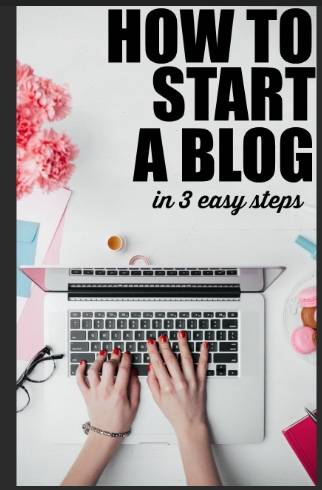Starting a blog can be an exciting and rewarding experience, whether you're looking to share your passions, build a personal brand, or generate income. With the right approach, you can create a successful blog that resonates with your audience. Here are some key steps and tips to guide beginners through the process of starting a blog.
1. Choose Your Blog
Niche
The first step is to decide on a niche—a specific topic or
area that you’re passionate about or knowledgeable in. Choosing a niche allows
you to focus on a particular audience and makes it easier to come up with
content ideas. Some popular niches include lifestyle, travel, health and
wellness, technology, finance, and personal development. It’s essential to
select a niche that aligns with your interests, as this will help you stay
motivated over the long term.
2. Select a Blogging
Platform
Once you’ve chosen a niche, select a blogging platform where
you’ll publish your content. Some of the most popular options for beginners
are:
- WordPress.org: Offers extensive customization options,
plugins, and themes. It’s free to use but requires hosting.
- Blogger: Simple to use and ideal for beginners. It’s free
and hosted by Google.
- Wix or Squarespace: Easy-to-use, drag-and-drop website
builders. They offer various templates but are more limited than WordPress in
terms of customization.
Each platform has its pros and cons, so it’s worth exploring
each one to see which best meets your needs.
3. Pick a Domain Name
and Hosting
Your domain name is your blog’s web address (e.g.,
yourblogname.com), so try to pick something unique, memorable, and reflective
of your niche. For hosting, providers like Bluehost, SiteGround, or HostGator
offer reliable services with affordable plans. Hosting is essential as it
stores your blog’s data and makes it accessible on the internet. If you choose
WordPress.org, hosting is a separate cost, while Blogger provides free hosting.
4. Customize Your Blog’s
Design
The appearance of your blog should be clean, professional,
and easy to navigate. Most blogging platforms offer a range of themes or
templates that you can customize to match your brand’s aesthetic. Focus on:
- Responsive design: Make sure your blog looks good on
mobile and desktop.
- Readability: Use a font and color scheme that’s easy on
the eyes.
- Navigation: Make it simple for visitors to find content
with clear menus and categories.
5. Create Quality
Content
Creating valuable content is the backbone of any successful
blog. To start, brainstorm topics that will be of interest to your target
audience, and ensure your posts are informative, engaging, and well-researched.
Quality content establishes your authority and builds trust with readers.
Consider using images, infographics, and videos to enhance the readability of
your posts.
6. Promote Your Blog
After publishing a few posts, it’s time to promote your blog
to reach a wider audience. Here are some effective ways to do so:
- Social Media: Share your posts on platforms like Facebook,
Instagram, and Twitter.
- Guest Blogging: Write guest posts for other blogs in your
niche, which can help you gain exposure.
- Email Marketing: Build an email list to keep your audience
updated on new posts.
- Search Engine Optimization (SEO): Optimize your posts with
keywords to rank higher in search engines and attract organic traffic.
7. Engage with Your
Audience
Blogging is not a one-way street; engaging with your
audience is crucial for building a loyal following. Respond to comments on your
posts, interact with followers on social media, and listen to feedback.
Building a community around your blog helps increase retention and can lead to
more shares, expanding your reach.
8. Monetize Your Blog
Once you’ve established a steady readership, there are
several ways to monetize your blog:
- Affiliate Marketing: Promote products or services and earn
a commission for each sale made through your affiliate links.
- Advertising: Use platforms like Google AdSense to display
ads on your blog.
- Sponsored Content: Collaborate with brands for sponsored
posts or product reviews.
- Digital Products: Sell e-books, courses, or printables
related to your niche.
Starting a blog requires effort, patience, and consistency, but the rewards can be substantial. By focusing on quality content, engaging with readers, and promoting your blog, you’ll be well on your way to building a successful blog that grows over time.


